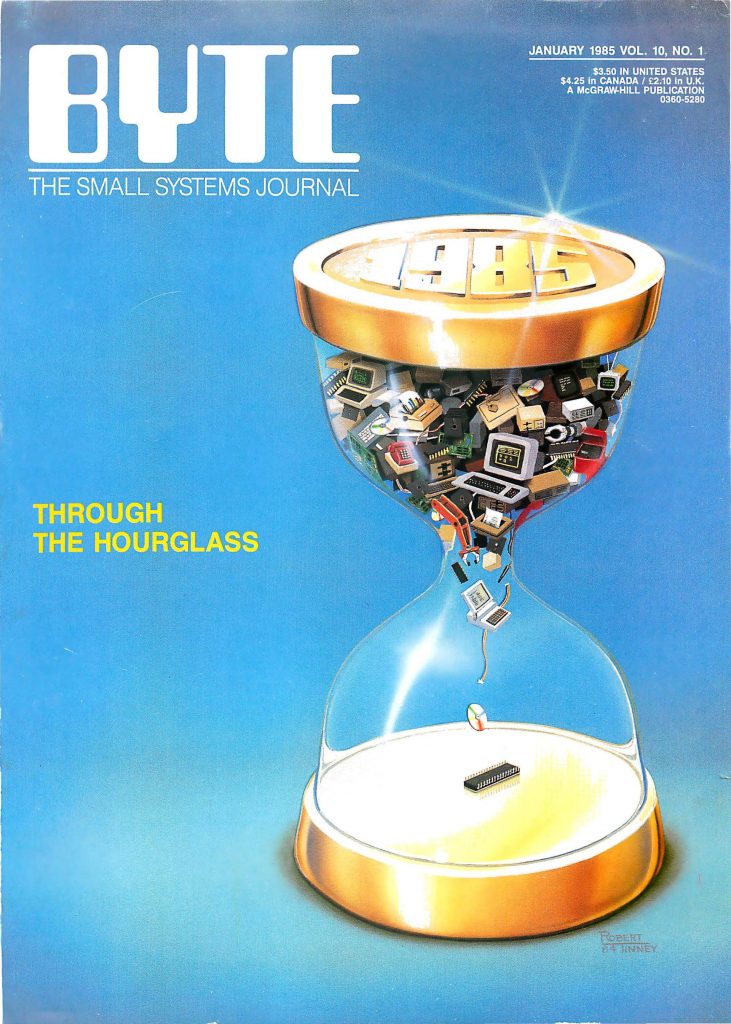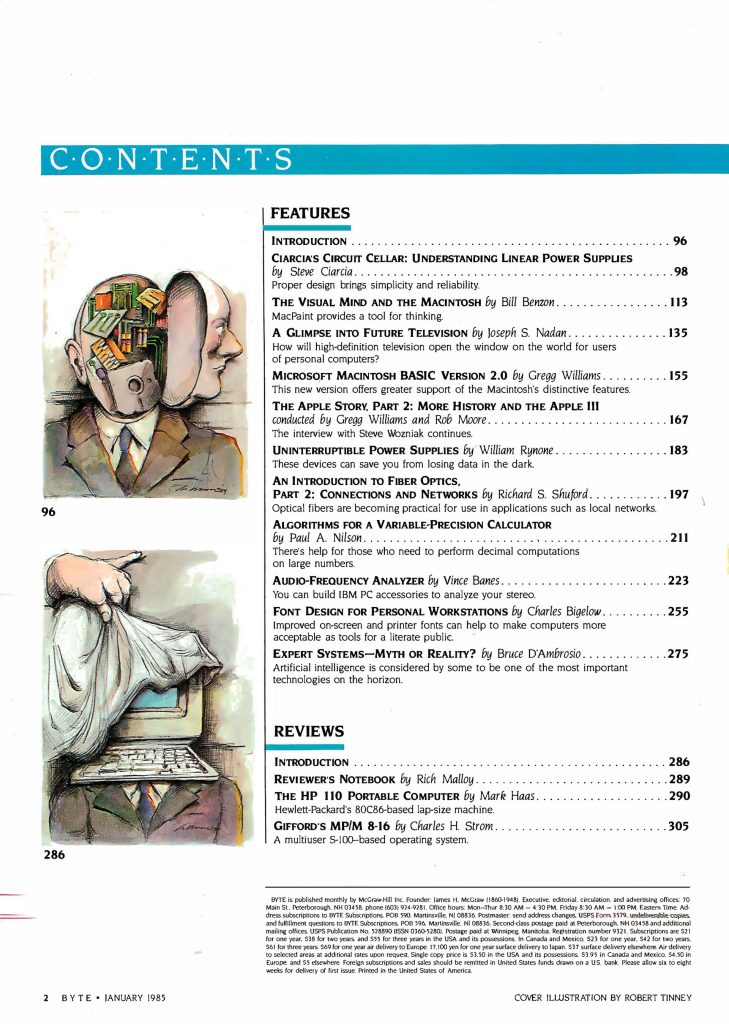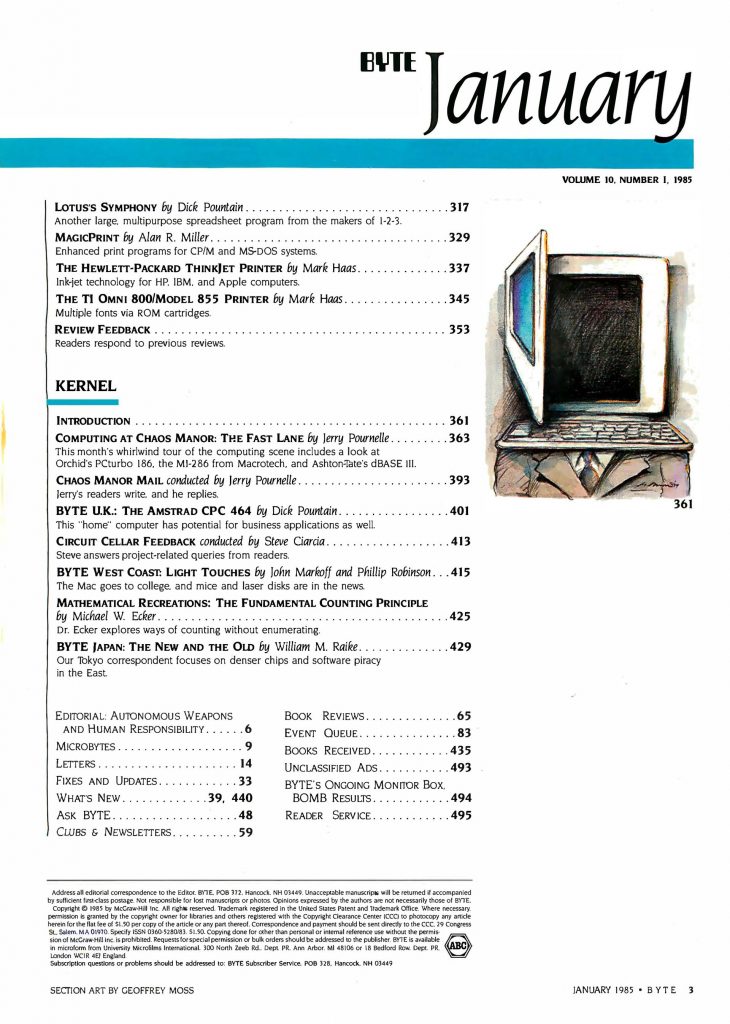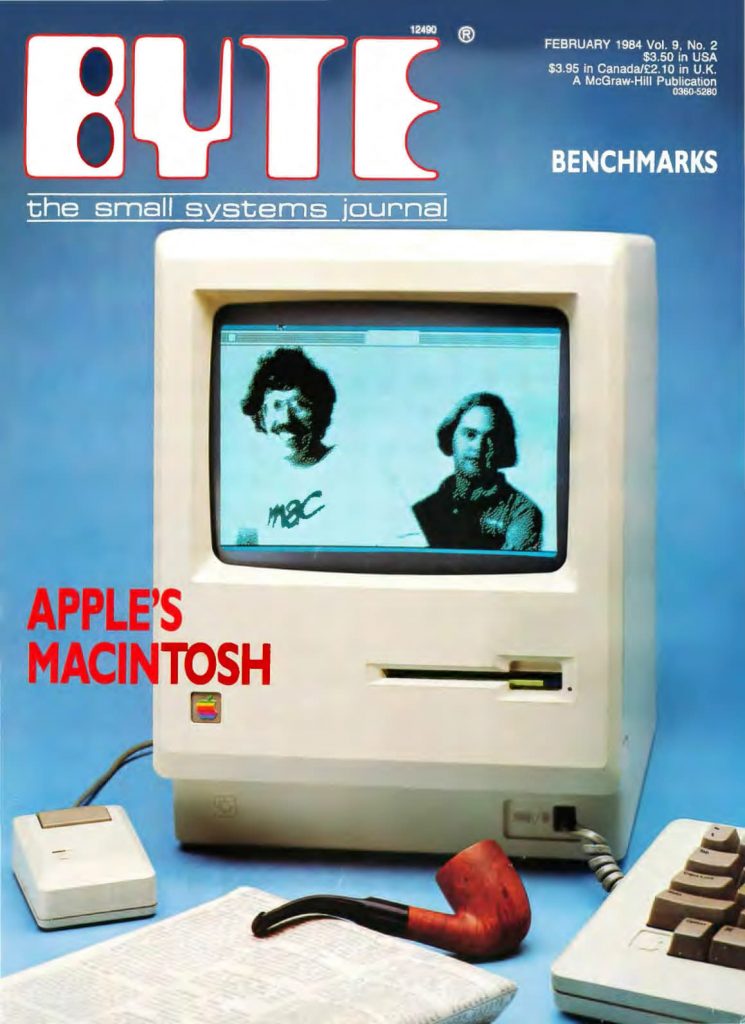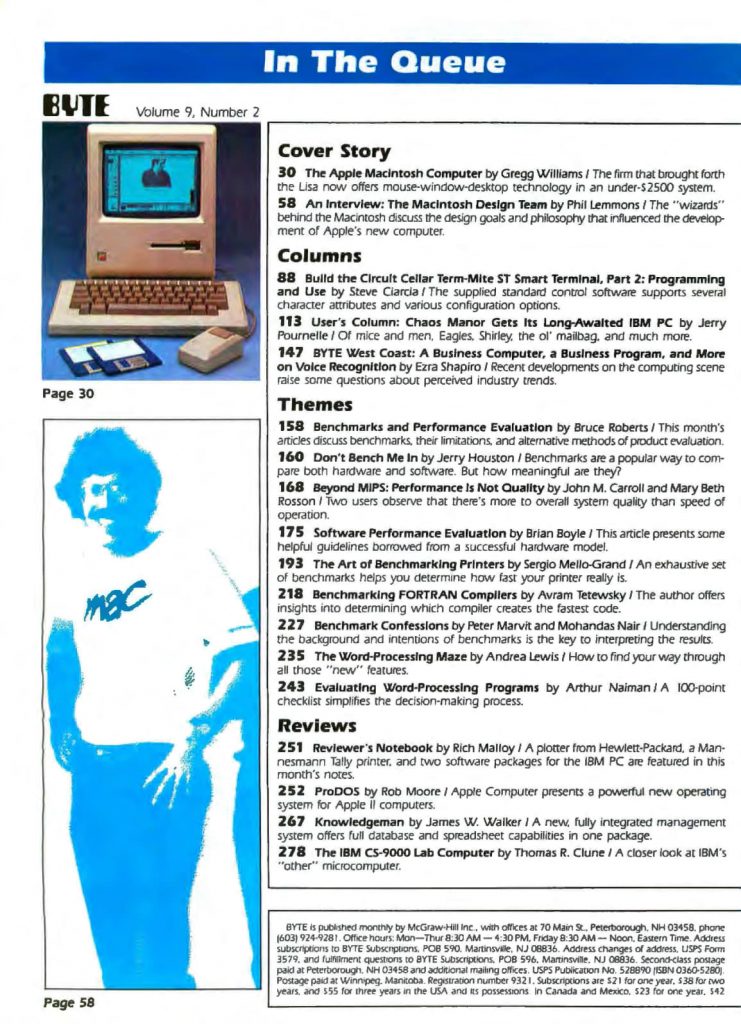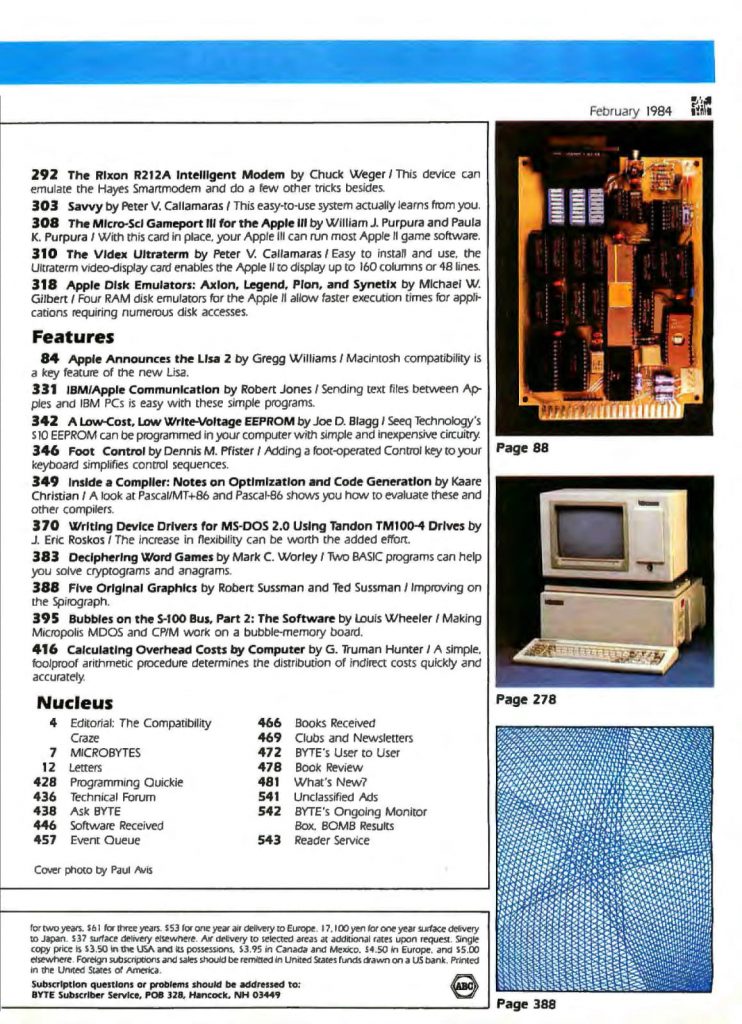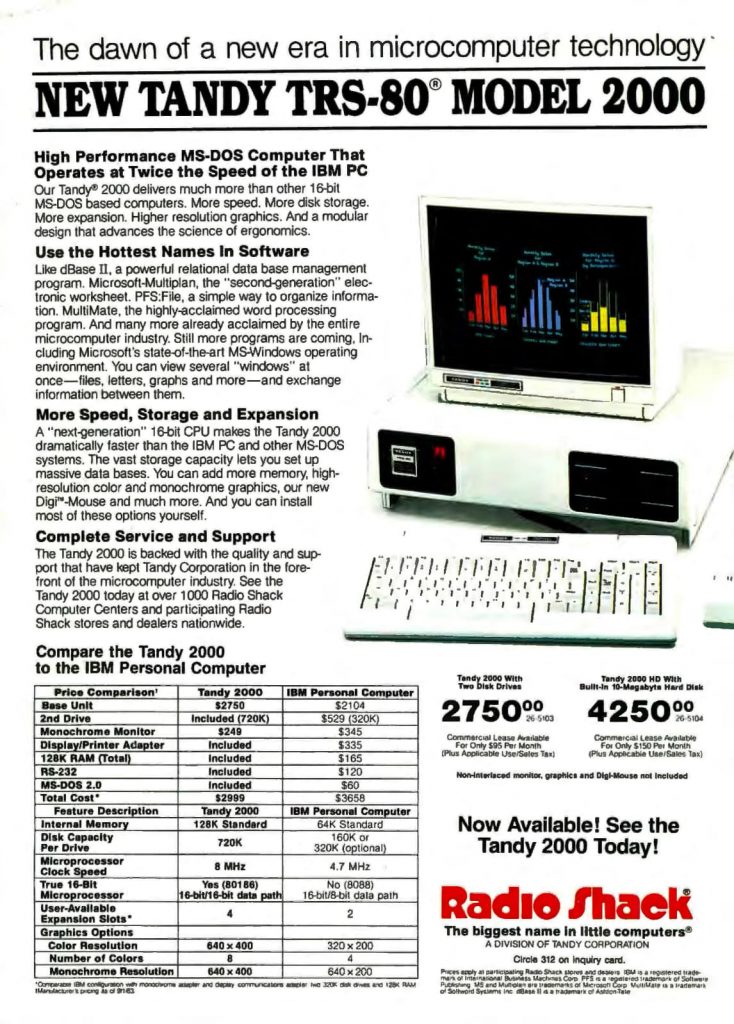Source: Byte – January 1985
Byte covered a wide variety of systems and tended to be more technically oriented than most PC specific magazines. It has some very large issues in the 1980s including this one from January 1985 weighing it at more than 500 pages. Contents include:
Features
- Ciarcia’s Circuit Cellar: Understanding Linear Power Supplies – How poor power supply design wrecked a project as well as info on how to properly design a linear power supply.
- The Visual Mind and the Macintosh – Using MacPaint as a tool for thinking and the easy to use nature of the Macintosh.
- A Glimpse Into Future Television – HDTV was being discussed at least as far back as the early 1980s. In this article it is mentioned that the next generation of television receivers would most likely have a large display area with a wider aspect ratio (5.33:3 is discussed as a proposal here), flexibility and interactivity, approximately twice the perceived horizontal resolution and vertical resolution of NTSC TV (which would only put it at about DVD resolution…not what is considered hi-def today), no artifacts, and more.
- Microsoft Macintosh BASIC Version 2.0 – A preview of the features of the latest version of Microsoft BASIC for the Macintosh.
- The Apple Story, Part 2: More history and the Apple III – Part 2 of an interview with Steve Wozniac on the history of Apple (which was only about 10 years old at this time). The Apple III and the Apple II disk drive are discussed here among other things.
- Uninterruptible Power Supplies – A comparison of uninterruptible power supplies including those from Cuesta Systems, Electronic Protections Devices, General Power Systems, Kalglo Electronics Co., Meirick Inc., and PTI Inc.
- An Introduction to Fiber Optics, part 2: Connections and Networks – How this relatively new technology is being used in computer communication.
- Algorithms For A Variable-Precision Calculator – This article provides pseudocode for creating a variable-precision calculator.
- Audio-Frequency Analyzer – A guide to building accessories for your IBM PC that will allow you to analyze your stereo or other audio input.
- Font Design For Personal Workstations – Better font design for increased legibility and productivity.
- Expert Systems – Myth Or Reality? – As far back as 1984 at least, the Department of Defense identified AI as one of the 10 most critical technologies to pursue. Expert Systems were among the first types of AI implementation.
Reviews
- The HP 110 Portable Computer – This small portable machine includes an 80C86 CPU @ 5.33MHz, 272KB static RAM, a 300 bps modem, an 80-column by 12 or 16 LCD, and more. All for $2995…plus another $795 if you want a disk drive.
- Gifford’s MP/M 8-16 – A typical MP/M 8-16 system includes a 20-slot mainframe cabinet, dual Qume 842 double-density double-sided 8-inch floppy-disk drives, and a Winchester hard-disk drive (a 21 MB drive in this review). The test configuration is a four user system (plus modem line) with 448K RAM. Depending on the exact configuration, prices can range from $5330 to $19925.
- Lotus’s Symphony – Basically this is Lotus’s sequel to Lotus 1-2-3. However, it adds database functionality in addition to spreadsheet functions.
- MagicPrint – Software that allows printing with true proportional spacing.
- The Hewlett-Packard ThinkJet Printer – An early and popular inkjet printer. This one would have set you back $495.
- The TI Omni 800/Model 855 Printer – The most unique aspect of this printer is that you could plug in different cartridges for different fonts.
Kernel
- Computing At Chaos Manor: The Fast Lane – Discussion of numerous products including Aris, the CompuPro 8/16 System, dBASE III, Elsinore, Safari, Magic Keyboard, MI-286 Processor Board, PCTurbo 186 Expansion Board, and more.
- Byte U.K.: The Amstrad CPC 464 – A look at this Z80 based computer that was popular in the U.K.
- Byte West Coast: Light Touches – Details on the proposed Macintosh network at Reed College. Plus higher resolution mice and using laser discs for databases.
- Mathematical Recreations: The Fundamental Counting Principle – Math shortcuts. Includes BASIC listings for generating nonsquare numbers, factoring a number into products of primes, and more.
- Byte Japan: The New And The Old – Mitsubishi develops smaller transistors, a new 68000 handheld computer from NEC, a look at the Fujitsu FM-11BS computer, and more.
- Editorial: Autonomous Weapons and Human Responsibility – The ethics of AI based warfare.
- Microbytes – Information Storage Inc. plans optical drive with 100 megabyte cartridges, several companies announce products using a standard CD as a read-only memory device for computer, new notebooks from Mitsubishi (Tredia) and Quadram (DataVue), Sony announces new multicolor display tech called Currentron, and more.
- What’s New – TI introduces Pro-Lite briefcase sized computer, Okidata introduces $286 color computer, new Seequa Cobra computer featuring 8086 CPU @ 8 MHz, Juki announces $299 daisy-wheel printer, and more.
- Ask Byte – Questions answered about using 80-column cards in the Apple IIe, creating high resolution graphics, using Shugart SA400 drives with Apple computers, screen modes on the PCjr, the 80186 and 80286 CPUs, and more.
- Book Reviews – Reviews of The SEcond Self: Computers and the Human Spirit by Sherry Turkle, Information Systems Security by Royal P. Fisher, and Microprocessors: Hardware, Software, and Design Applications by Wunnava V. Subbarao.
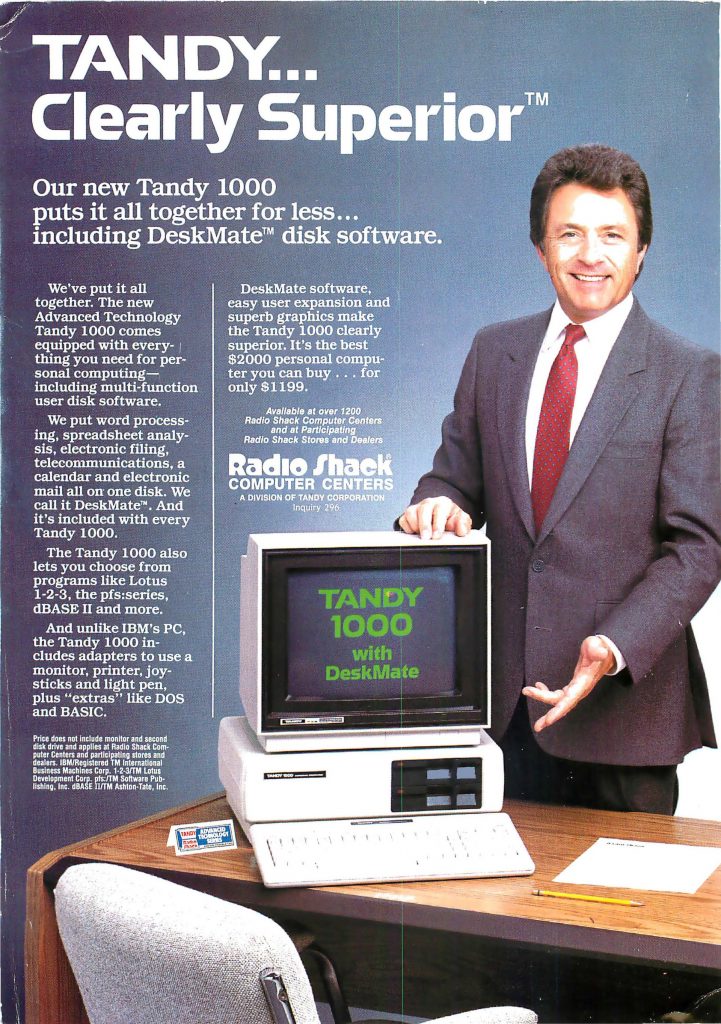
…and more!
